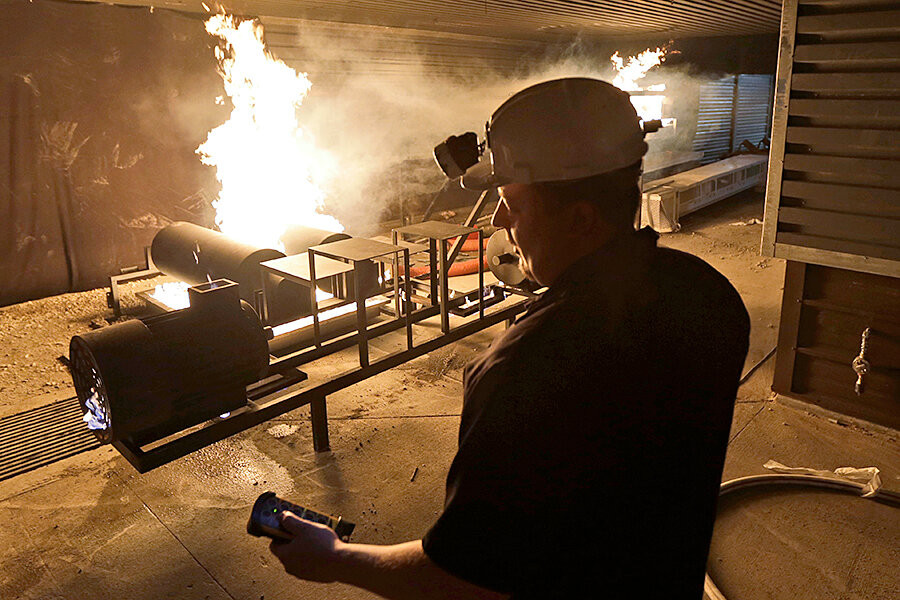The end of coal? Alpha Natural bankruptcy points to industry troubles.
Loading...
One of America’s largest coal companies filed for bankruptcy Monday, striking the latest blow to an industry that, by its own admission, is struggling to adapt to the ongoing global conversion to clean energy.
Alpha Natural Resources (ANR), based in Bristol, Va., is the country’s biggest miner of coal used in steelmaking. In a bankruptcy filing, Kevin Crutchfield, the company’s chairman and CEO, described “unprecedented changes” for the coal industry.
“The US coal industry as currently structured is unsustainable,” he said. “Multiple major producers ... have been, and will continue to be, driven to the brink of insolvency.”
Indeed, three rival companies have filed for bankruptcy in the past 15 months, Bloomberg reported: Walter Energy, Patriot Coal, and James River Coal.
Much of ANR’s operations are focused in central Appalachia and the Powder River Basin in Wyoming.
Glen Besa, director of the Sierra Club’s Virginia chapter, says that resource diversification is crucial for many communities where coal companies like ANR operate, especially the Appalachian region, where about 17 percent of the population lives below the poverty line and 90 counties have poverty rates at least 1.5 times the US average, according to the Appalachian Regional Commission.
“The entire Appalachian region has suffered from some of the highest poverty rates in the country, whether coal is booming or hurting,” he says.
But while coal has historically gone through booms and busts, he thinks “fundamental changes” in the global energy economy mean that coal may have seen its last boom.
“A comeback by coal is unlikely,” he says.
ANR's bankruptcy filing comes on the same day that the Obama administration released its Clean Power Plan. The plan, which has been hailed as the strongest-ever climate action by a US president, calls for US power companies to generate 28 percent of the country’s energy from renewable sources by 2030 (an increase from 11 percent today), while cutting carbon emissions to 32 percent of 2005 levels.
Moves away from coal have been multiplying internationally as well. In early May, the Church of England announced that it would sell off its assets from coal, worth more than $18 million, and later that month, the Norwegian Parliament voted to sell off all its coal investments from its $900 billion sovereign wealth fund. The divestments totaled more than $8 billion and affected 122 companies, The Guardian reported.
But the Monitor’s Mark Sappenfield says that the Clean Power Plan is likely to face “tremendous legal headwinds” in the near future.
"Legal challenges will attempt to gut the regulations, subsequent presidents could allow them to lapse, and energy companies will likely oppose them every step of the way," he writes.
Murray Energy, which is based in St. Clairsville, Ohio, and is the nation's largest underground coal-mining company, has already announced that it will sue the US Environmental Protection Agency over the new regulations. In a press release, the company called the Clean Power Plan “flagrantly unlawful.”
At its peak, coal produced about 52 percent of America’s electricity, said Mr. Crutchfield of ANR. In April 2015, coal was producing about 30 percent.
Prices for metallurgical coal, or met coal, have dropped 72 percent since 2011, and ANR hasn’t turned a profit since 2010, according to Bloomberg. Since July 2011, the company has idled or closed more than 80 mines and reduced its workforce from 14,500 to fewer than 8,000, according to a bankruptcy filing from Philip Cavatoni, ANR’s executive vice president and chief financial officer.
Crutchfield said in his bankruptcy filing that tightening regulations have “compounded” other challenges facing the industry in recent years, in particular the historically low coal prices and increased competition from natural gas. He also cited intense competition within the coal industry.
“The change and challenges the U.S. coal industry has experienced over the last several years are greater than any in the past three decades,” he said in a statement. “There is no doubt more uncertainty ahead, but also transformational opportunity in the coal sector for those who make proactive, strategic decisions.”
In a statement, the company said it will seek the necessary immediate relief from the bankruptcy court to allow normal business operations to continue uninterrupted while in Chapter 11 bankruptcy, allowing customer commitments to be honored and wages and benefits for ANR's affiliated employees to be paid.
In a statement, Crutchfield expressed optimism that the bankruptcy filing would strengthen ANR.
“It will enable us to build on the significant steps we have taken over the past several years to restructure our debt and protect our operations,” he said. “I am confident Alpha will emerge from this process as a stronger company, with a diversified resource base and better positioned for the future.”








